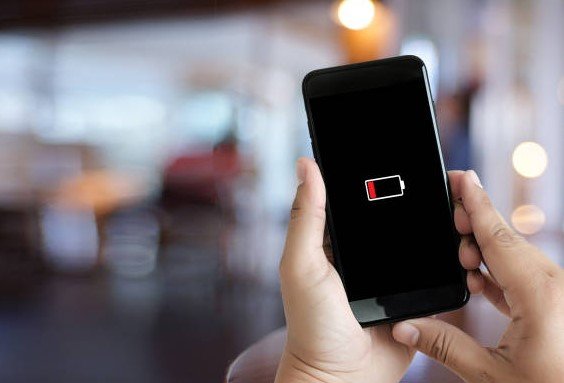Google has launched its Pixel 10 series amid high expectations, but users and reviewers report mixed battery results that raise questions about efficiency. Released in August 2025, the lineup includes the standard Pixel 10, Pixel 10 Pro, and Pixel 10 Pro XL, with the larger model often needing extra charges during heavy use, despite upgrades to the Tensor G5 chip.
These issues come as smartphone buyers demand all-day power without plugs, putting pressure on Google to fix ongoing hardware debates. Early tests show the standard and Pro models hold up for typical days, but the XL variant lags, echoing problems from past Pixels.
Battery Performance Breakdown
Reviewers tested the Pixel 10 series in real scenarios like streaming videos, browsing the web, and playing games. The standard Pixel 10 often hits about 10 hours of screen time on a single charge, making it reliable for light to moderate use.
The Pixel 10 Pro does even better, pushing past 11 hours in some cases, thanks to its 4,870mAh battery. However, the Pixel 10 Pro XL, with a bigger 5,200mAh cell, surprises by draining faster under intense tasks, sometimes requiring a midday top-up.

This variability frustrates users who expected consistent gains from the new chip. Heavy users report the XL model heats up during gaming or video calls, which speeds up battery loss.
One key factor is the mandatory throttling after 200 charge cycles. This slows charging and caps battery capacity to extend long-term health, but it cuts peak performance right when buyers want it most.
Tensor G5 Chip Efficiency Insights
Google designed the Tensor G5 to boost power management, moving production to TSMC for better results. Benchmarks show a 15% performance jump over the previous Tensor G4, yet efficiency still trails rivals like Snapdragon chips.
In endurance tests, the chip handles everyday apps well but struggles with demanding tasks. Heat buildup remains an issue, leading to quicker drain compared to competitors.
Experts point out the GPU in Tensor G5 underperforms in graphics-heavy use, which affects overall battery life. A recent software update aims to fix GPU drivers, potentially improving output without hardware changes.
| Model | Battery Size | Average Screen Time | Charging Speed |
|---|---|---|---|
| Pixel 10 | 4,970mAh | 10 hours | 29W wired, 15W wireless |
| Pixel 10 Pro | 4,870mAh | 11 hours | 29W wired, 15W wireless |
| Pixel 10 Pro XL | 5,200mAh | 9 hours (heavy use) | 39W wired, 15W wireless |
This table highlights how battery sizes do not always match real-world stamina, especially for the XL model.
User Reactions and Common Complaints
Social media buzzes with Pixel 10 owners sharing their experiences. Many praise the standard model’s all-day reliability for work and casual scrolling.
Others vent about the Pro XL’s shortcomings, calling it a step back from expectations. One user noted rapid drain during 4K video recording, forcing them to carry a power bank.
- Overheating during extended gaming sessions leads to faster battery loss.
- Inconsistent performance in cold or hot environments affects daily use.
- Software bugs in early updates sometimes worsen drain, though patches help.
These points reflect widespread sentiment that Google needs quicker fixes. Forums discuss workarounds like disabling certain AI features to save power.
Despite positives, such as strong idle times, the mixed feedback sparks debates on whether the series meets premium standards.
Anecdotal stories from beta testers suggest upcoming Android updates could smooth out these kinks, but users want hardware-level solutions.
How It Stacks Up Against Rivals
Compared to the Samsung Galaxy S25, the Pixel 10 Pro lasts similar times in video playback but falls short in gaming marathons. Apple’s iPhone 16 Pro edges out in efficiency, often adding an extra hour under heavy loads.
Industry tests show Qualcomm-powered phones sip power more steadily, thanks to mature chip designs. Google’s Tensor still catches up, but its AI focus sometimes trades off battery for smart features.
Buyers weigh these against Pixel’s camera strengths and clean software. For power users, rivals offer fewer compromises.
Google’s Strategy and What Comes Next
Google acknowledges the feedback and rolled out a September 2025 update to tweak battery optimization. Insiders hint at more tweaks in Android 16, set for December 2025, to boost efficiency.
The shift to mandatory health features shows a focus on longevity, aiming for batteries that last years without degrading fast. Yet, this sparks talks on user choice versus forced limits.
Looking ahead, the Pixel 11 could refine Tensor further, learning from these issues to match top efficiency. For now, potential buyers should test devices in stores to match their needs.
As debates continue, share your Pixel 10 battery experiences in the comments below. Did it meet your expectations? Let us know and spread the word to help others decide.








